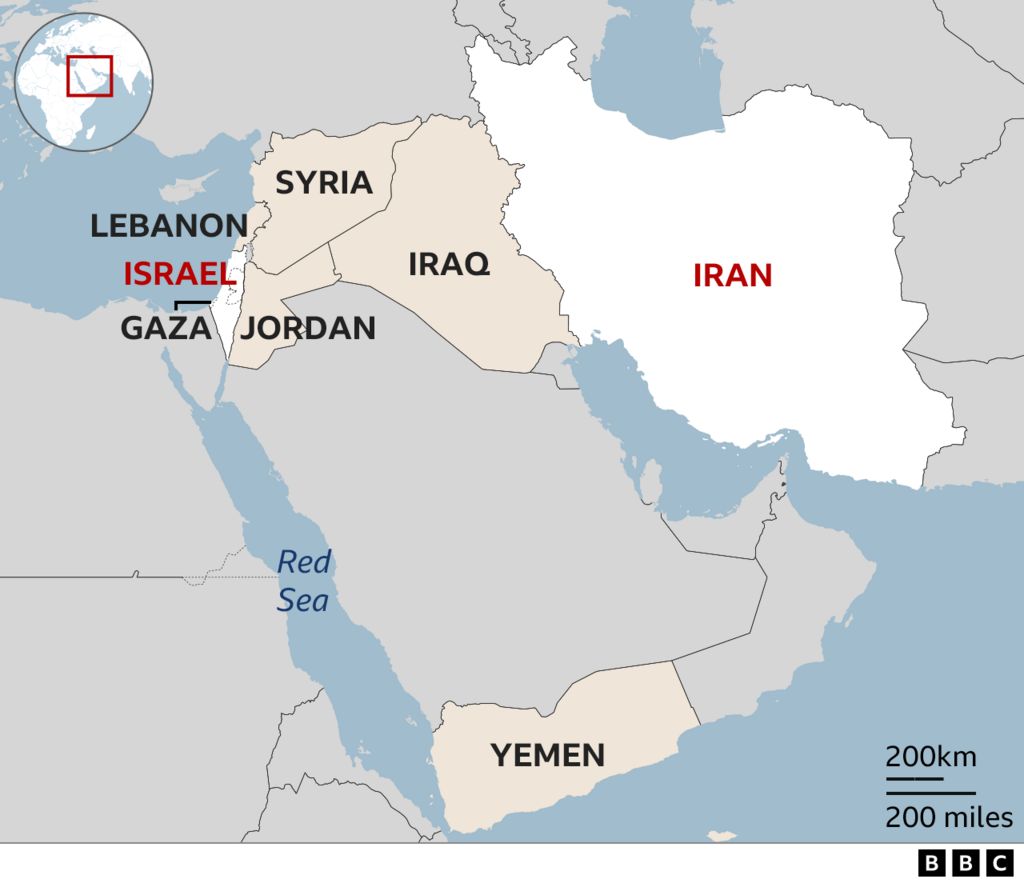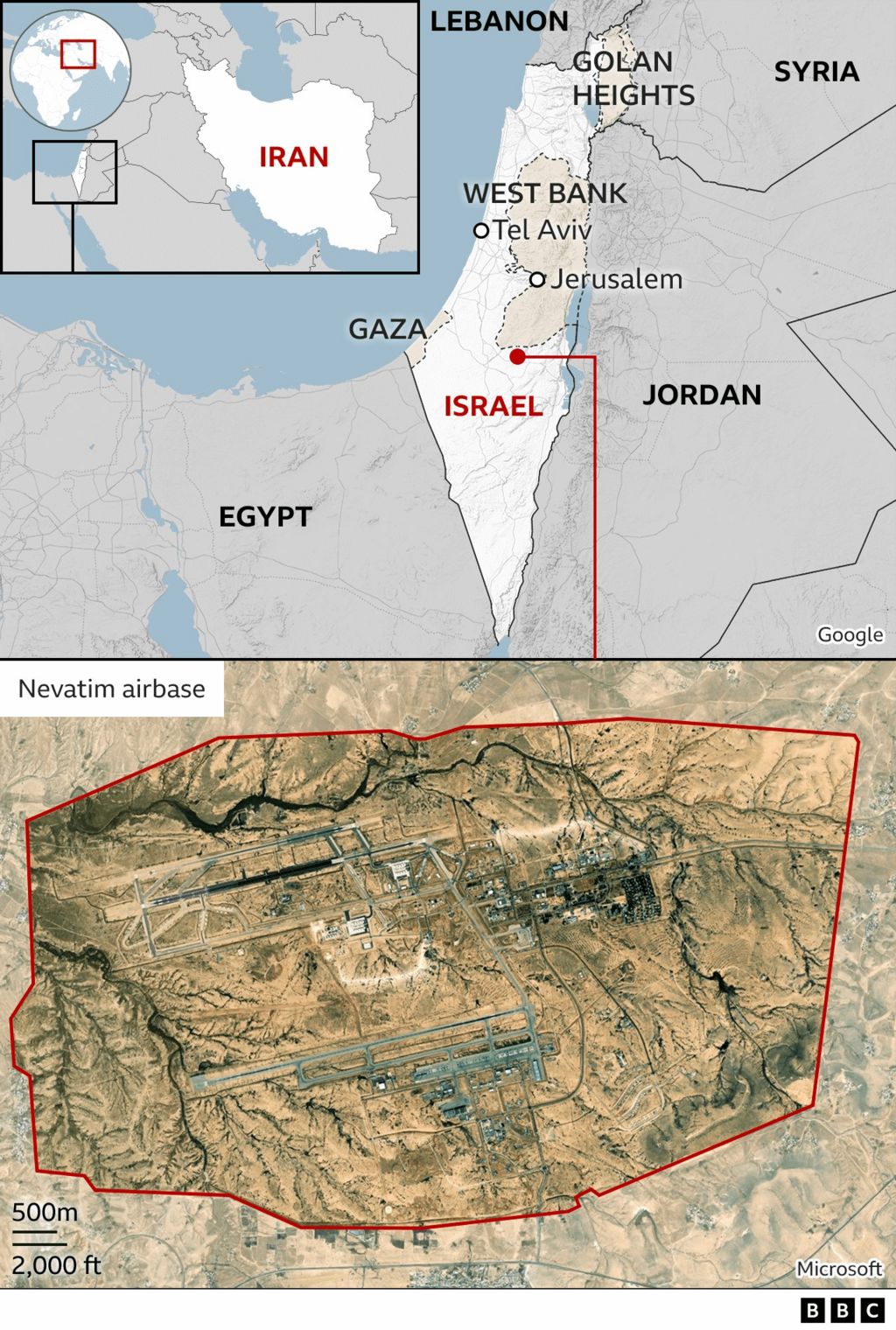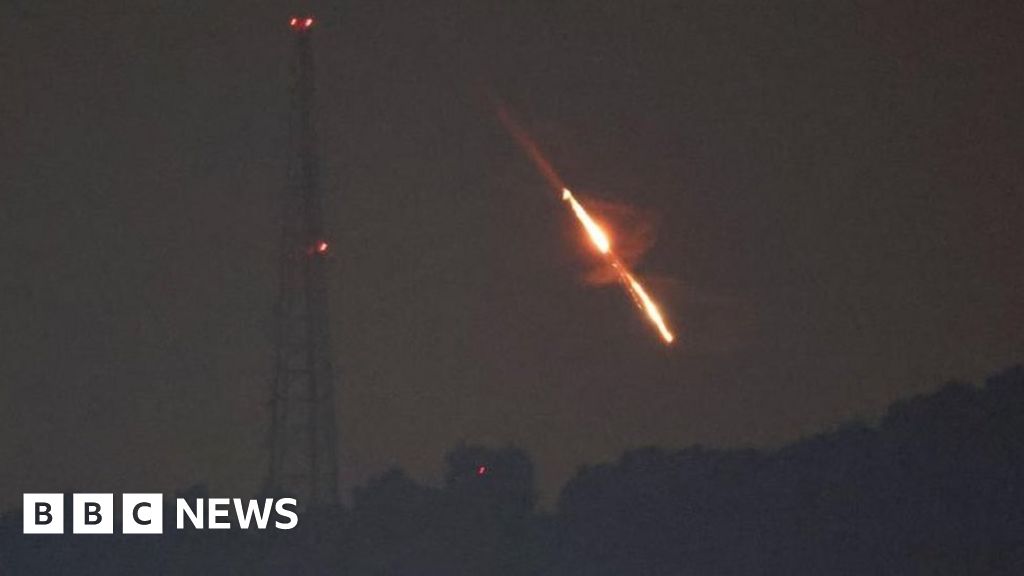This video can not be played
To play this video you need to enable JavaScript in your browser.
For the first time ever, Iran has carried out strikes against Israeli territory.
In the middle of Saturday night, air raid alerts went off in Israel, residents were urged to seek shelter while explosions were heard as air defences were activated.
Interceptions lit up the night sky in several places across the country, while many drones and missiles were shot down by Israel’s allies before they reached Israeli territory.
At least nine countries were involved in the military escalation – with projectiles fired from Iran, Iraq, Syria and Yemen and downed by Israel, the US and France as well as Jordan.
Here’s what we know about the attack so far.
Attack involved drones, cruise missiles and ballistic missiles
Iran launched more than 300 drones and missiles towards Israel, the Israeli military said on Sunday.
The attack included 170 drones and 30 cruise missiles, none of which entered Israeli territory, and 110 ballistic missiles of which a small number reached Israel, military spokesman Rear Admiral Daniel Hagari said in a televised statement. The BBC has not independently verified those figures.
The shortest distance from Iran to Israel is about 1,000km (620 miles) across Iraq, Syria and Jordan.
Bombardment launched from several countries
On Saturday night Iran’s Revolutionary Guards Corps (IRGC) said it had launched drones and missiles.
Iraqi security sources told Reuters that projectiles were seen flying over Iraq in the direction of Israel.
The IRGC said ballistic missiles were fired almost an hour after the slower moving drones so that they would strike Israel at roughly the same time.
The US defence department said US forces intercepted dozens of missiles and drones launched from Iran, Iraq, Syria and Yemen.
The Iran-backed Hezbollah group in Lebanon also said it had fired two barrages of rockets at an Israeli military base in the occupied Golan Heights, a plateau which Israel has annexed from Syria in a move not recognised by most of the international community.
Israel and allies intercept majority of drones and missiles
Some 99% of the incoming barrage was intercepted either outside Israeli airspace or over the country itself, Rear Adm Hagari said.
They included all the drones and cruise missiles, which follow a flat trajectory, and most of the ballistic missiles, which are fired on an arcing trajectory that uses gravity to reach very high speeds.
US President Joe Biden said US forces “helped Israel take down nearly all” drones and missiles launched by Iran on Sunday. In a statement, he said the US had moved aircraft and warships to the region before the unprecedented attack.

Operating from undisclosed bases in the region, US forces shot down a number of Iranian drones over southern Syria near the border with Jordan, security sources told Reuters.
British RAF Typhoon fighter jets were also deployed to shoot down drones. They flew over Iraq and Syria but not over Israel.
Jordan – which has a peace treaty with Israel but has been highly critical of the way it has carried out its war against the Palestinian group Hamas in Gaza – also intercepted flying objects that entered its airspace to secure the safety of its citizens, a Jordanian cabinet statement said.
France helped to patrol airspace but it was unclear if they had shot down any drones or missiles, the Israeli military said.
How many missiles got through and what damage did they cause?
In Jerusalem BBC correspondents reported hearing sirens and seeing Israel’s Iron Dome missile defence system in operation, which uses radar to track rockets and can differentiate between those that are likely to hit built-up areas and those that are not.
Interceptor missiles are only fired at rockets expected to strike populated areas.
A few of the ballistic missiles got through and struck Israeli territory, Rear Adm Hagari said.
One of them “lightly hit” the Nevatim air force base in the Negev desert in southern Israel. Rear Adm Hagari said the base was “still functioning”.

Iran’s official IRNA news agency said the attack had dealt “heavy blows” to the air base.
Some 12 people were injured in Israel overall, Rear Adm Hagari said.
They included a seven-year-old girl from a Bedouin Arab community near the southern town of Arad, who was reported to have been injured by shrapnel after an Iranian drone was intercepted overhead. She was in intensive care.
Jordan also said that some shrapnel had fallen on its territory “without causing any significant damage or any injuries to citizens”.
What happens now?
Israel’s Channel 12 TV cited an unnamed Israeli official as saying there would be a “significant response” to the attack.
Israeli airspace has been reopened as has that of neighbouring countries, but Defence Minister Yoav Gallant said the confrontation with Iran was “not over yet”.
Meanwhile Iran has warned Israel its response “will be much larger than tonight’s military action if Israel retaliates against Iran”, armed forces chief of staff Major General Mohammad Bagheri told state TV.
He said US bases would also be attacked if the US took part in any Israeli retaliation.
IRGC commander Hossein Salami also said Tehran would retaliate against any Israeli attack on its interests, officials or citizens.
The UN Security Council is due to meet at around 20:00 GMT to the latest crisis at Israel’s request.
Mr Biden said he would also convene leaders of the G7 group of wealthy nations on Sunday to coordinate a “united diplomatic response” to Iran’s “brazen” attack.

